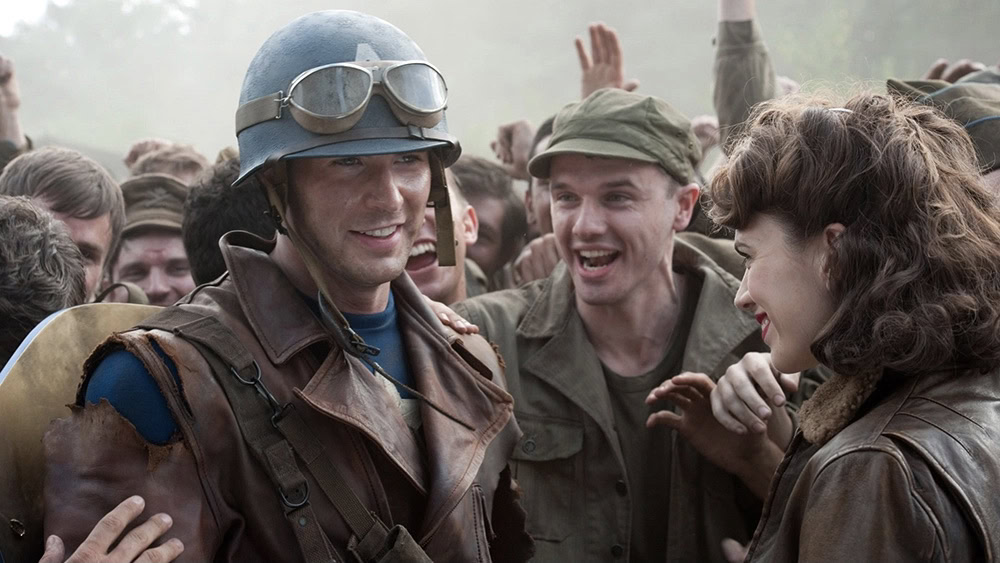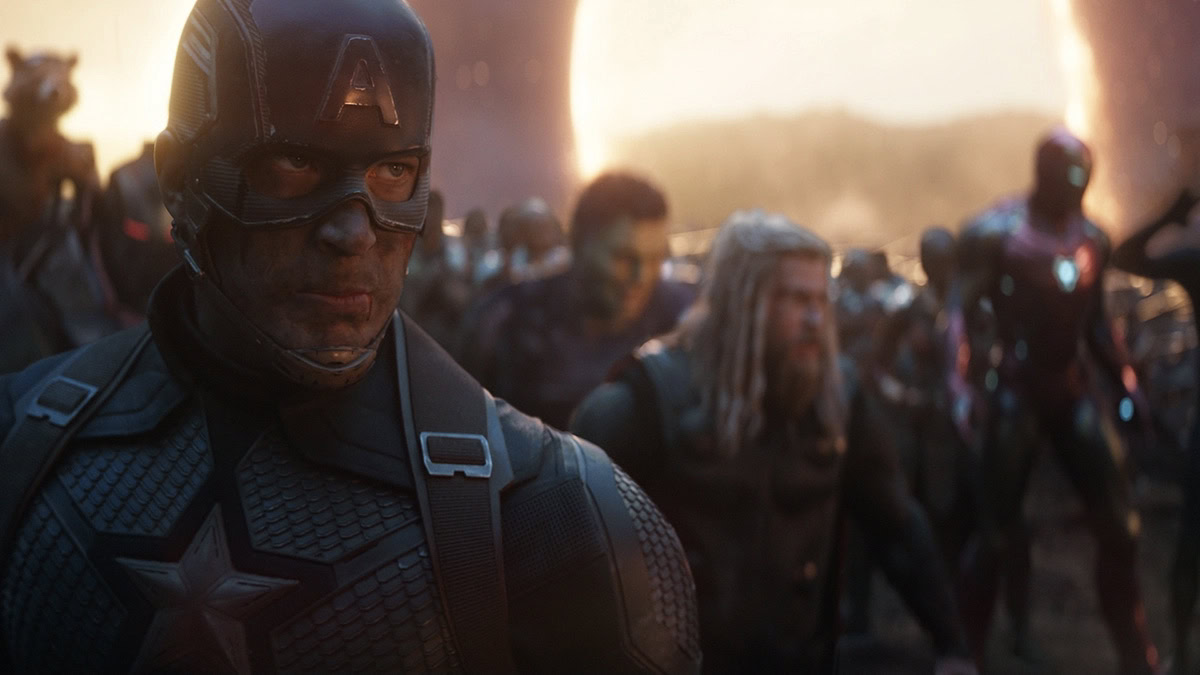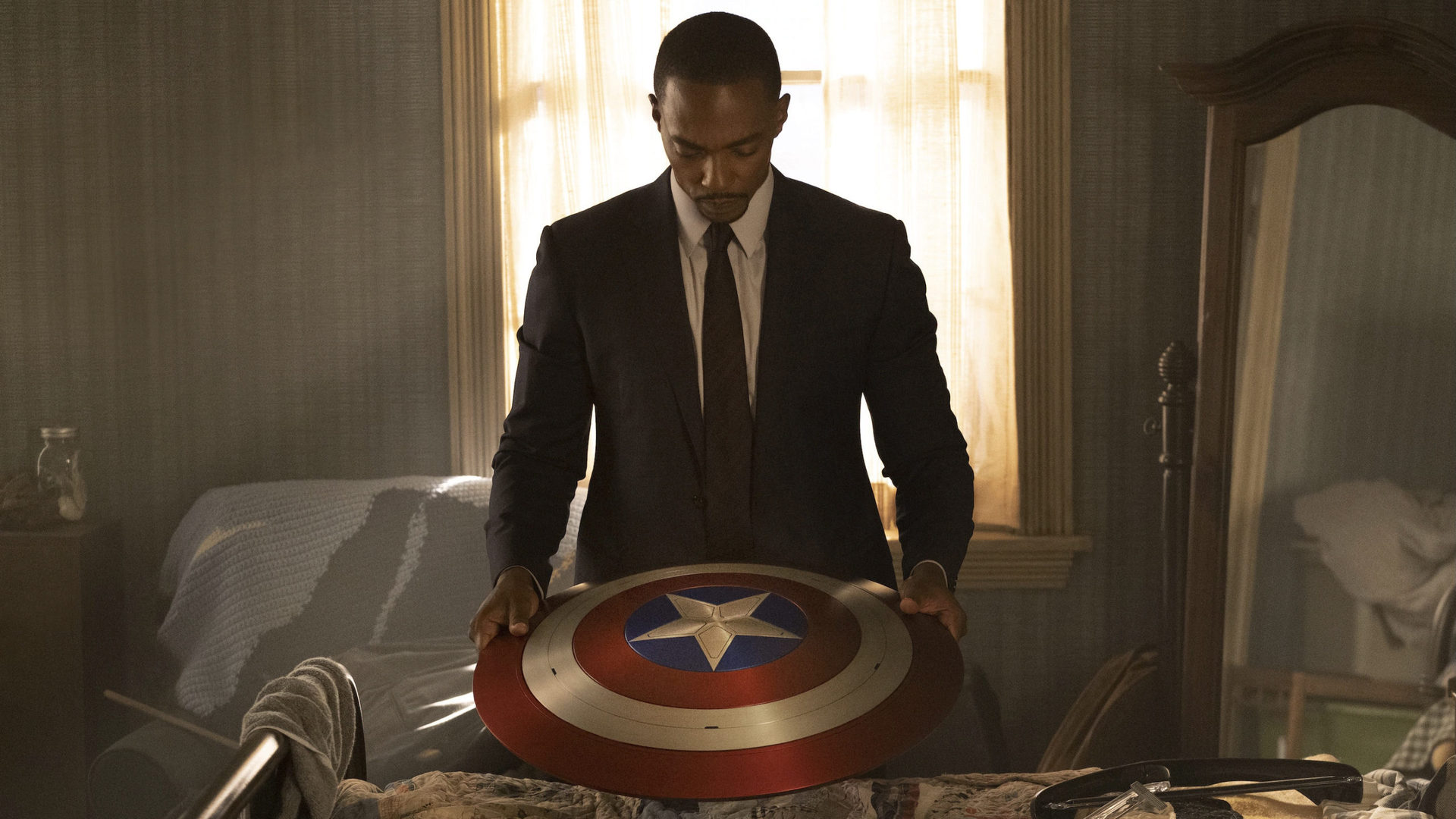Affiliate links on Android Authority may earn us a commission. Learn more.
Captain America: The heart and soul of the MCU turns 10
July 20, 2021

It’s been 10 years this week since Captain America: The First Avenger came out and — more than any other film from the early “Phases” — established the strongest underpinnings of the Marvel Cinematic Universe: namely, a healthy mistrust of large and powerful institutions.
It’s hard to believe that just a decade ago, the now-sprawling, interconnected MCU was still stumbling along as it looked to find its feet. It wasn’t until The First Avenger, the fifth MCU title, that a defining ethos began to emerge. Despite coming so (relatively) late in the game, the first Captain America film really does feel like the start of something new.
Especially in retrospect, we can see the final piece of the puzzle falling into place right where it belongs. The inevitable team-up of the Avengers (teased in the title) suddenly makes perfect sense, paving the way for over 20 films and a slew of original series on Disney Plus in the following decade.
Director Joe Johnson crafts a tight and engaging origin story that’s worth revisiting as a defining entry in the MCU canon. Johnson was a great choice. He picks up right where he left off 20 years earlier with his excellent and underappreciated The Rocketeer, a kind of Captain America/Iron Man prototype that reads today like an undeniable precursor to the MCU.
Warning: This story contains a discussion of major plot points from Captain America: The First Avenger, Captain America: The Winter Soldier, Captain America: Civil War, Avengers: Endgame, The Falcon and the Winter Soldier, and other Marvel Cinematic Universe titles. Potential spoilers ahead!
Captain America: A hero is born

The set-up for Captain America: The First Avenger is refreshingly simple. As World War II rages on, the American government seeks an extra advantage by developing a super-soldier program, enhancing its fighters to make them, well, super.
Enter Steve Rogers, a scrawny kid from Brooklyn who wants desperately to join the war effort and make a difference, despite his asthma and overall lack of physical aptitude. Chris Evans does great work. Reduced in size and stature with uncanny CGI, he immediately reads as the guy we should root for. Known more for playing jocks in Not Another Teen Movie and Fantastic Four by 2011, Evans immediately embodies the underdog goodness of Steve Rogers.
Given the serum, Steve becomes a hulking hero type, ready to fight the Nazis and Red Skull, Germany’s own super-soldier, disfigured by an early super-soldier serum prototype. But Steve, importantly, doesn’t change. At least his character and identity don’t, even as his body does. He keeps standing up to bullies and fighting for what he believes in, not because he has the upper hand now, but because that’s what he’s always done. The odds don’t matter to Steve if his intentions are good.
And he won’t be used as a puppet. The government initially frames Steve as a propaganda tool, singing and dancing on stage to sell war bonds. That’s not for Steve. Instead, he goes to war and fights the fight himself, against orders. He’s not opposed to symbols (as his American flag costume can attest), but he also needs action to back those symbols up. What good is a shield if it’s just a prop?
The hero within
Doing the right thing regardless of the cost is a theme that runs through the film. Erskine, the scientist who developed the super-soldier serum, sees something in Steve that’s far more valuable and noble than brute strength or patriotism.
“I don’t like bullies. I don’t care where they’re from,” Steve says to Erskine when they first meet. Erskine isn’t just a government suit, looking to win. He’s a German defector, fighting his own demons and hoping to make a difference. Erskine has been lied to by politicians before. He watched Hitler corrupt his country, preying on the fears and insecurities of its people after World War I. He’s wary of those who think they have all the answers and who tell him exactly what he wants to hear.
Erskine loves his homeland, just as Steve loves his, but this isn’t about America vs. Germany. It’s about what’s right. America is a convenient tool to help him fight an impossible force. But Steve represents something more. He’s a true underdog who stands up for what’s right even if it means he’ll be knocked out in an alley for it. He’s seen power abused, and that’s why Erskine trusts him.
Steve’s best friend Bucky sees something similar in him. He doesn’t follow Captain America into battle. He follows “that little guy from Brooklyn who was too dumb not to run away from a fight.”
Avengers assemble

As a lead-in to 2012’s The Avengers and the MCU Phases that followed, Captain America: The First Avenger did some heavy lifting. Starting with 2008’s Iron Man and The Incredible Hulk, and followed by Iron Man 2 in 2010 and Thor in 2011, the MCU was originally focused on very personal journeys.
The films certainly had their strengths. Iron Man deals with personal responsibility for systemic evils, but it’s about one man’s growth, first and foremost. Despite a military foe, The Incredible Hulk is a story of internal conflict. It can be read as a metaphor for male aggression or simply finding inner peace and balance. Thor was perhaps the most insular of the lot. Despite coming to Earth, the Norse god of thunder tries to impress his dad and re-earn his place as royalty in Asgard.
While brief scenes teased an eventual team-up, the films weren’t particularly cohesive. But after The First Avenger, a common theme emerged. Captain America, frozen during the war and brought back to fight in the present day, would be the symbol to unite a wealth of heroes in a common cause.
Thor would go on to challenge the power and dark history of Asgard itself. Steve would continue fighting unaccountable institutions like the government-led S.H.I.E.L.D., corrupted by the Nazi-adjacent H.Y.D.R.A. New heroes like Ant-Man and Captain Marvel would stand up to systems of authority, from local law enforcement to an intergalactic military. Black Panther challenged his nation’s isolationist practices.
Tony Stark (Iron Man) would eventually tear the Avengers apart in his attempt to consolidate power to protect the Earth. His rift with Steve engaged directly with the lessons of The First Avenger. How can you stand up for the little guy when all you know is how to be the big guy?
Captain America and the road to Endgame
Captain America has had one of the most satisfying character arcs in the MCU.
He was initially a true underdog, who saw how systems are built to favor the strong. While he tried to do good within those systems (the military, S.H.I.E.L.D.), he ultimately refused to follow rules for their own sake, doing what needed doing whether sanctioned or not.
That ethical code has resonated consistently throughout the MCU, including in Avengers: Age of Ultron, Captain America: The Winter Soldier, Captain America: Civil War, Black Panther, Thor: Ragnarok, and now in all three Disney+ Marvel series.
While Tony Stark eventually sacrificed himself for the greater good, learning selflessness, by the end of Avengers: Endgame, we saw Steve finally stop his fight and accept a degree of peace in his life. The scrawny kid we saw getting back up, again and again when he was knocked down, gave himself permission to retire. He grew old with the love of his life, passing on his shield to the next champion of the oppressed.
Captain America in Phase 4 and beyond

The beauty of Captain America: The First Avenger and everything it represents is that it doesn’t rely on Steve Rogers, or any single person.
Steve lived a good life, no doubt. But his mission was what mattered. He realized that he was entitled to a life outside the fight.
Now, the fight goes on. The new Captain America, anointed in the Disney Plus series The Falcon and the Winter Soldier, is Sam Wilson, who fought alongside Steve as one of the Avengers. Sam hesitates to take on the title, and even rejects it for a time. As a Black man, he worries about the way Captain America and the entire super-soldier program prioritized whiteness and upheld racist institutions within America.
That’s the legacy of Captain America within the MCU, first established in The First Avenger 10 years ago. Fighting for the little guy means always holding the big guy at bay. It means not just following orders. Not automatically taking your own country’s side.That tension is the heart and soul of the MCU. It’s what will hopefully guide Phase 4 and beyond as we meet new heroes like the Eternals, Shang-Chi, and more. It’s what Captain America: The First Avenger represents.
Thank you for being part of our community. Read our Comment Policy before posting.